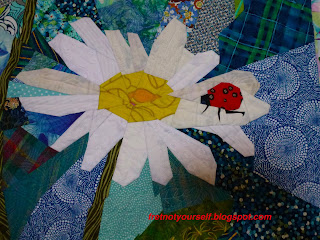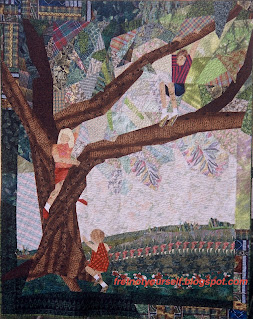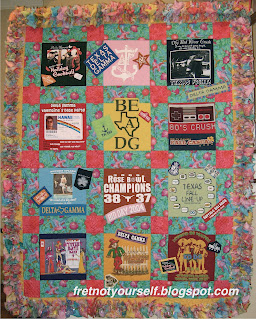When the aspen leaves fall they cover bare dirt or decaying leaves. My brown and black leaf-printed fabric should realistically portray nature. Surely the yellows and oranges would shine on this duller background. Wrong!
I was as certain the green and blue fabric would be perfect in the leaves. The white lines on the fabric could be leaf veins. However, when the leaf was sewed the blue stood out like a sore thumb. Was I just adding wild fabrics for no reason? Should it be ripped out and replaced with a much quieter fabric?
Before going to that effort I pulled various colors from my stash and the blues looked wonderful. Even the green and blue fabric fit in! Before laying it out I thought this combination would be too gaudy, too many bright tones. I thought only a dull fabric would make the warm tones sparkle. How nice to be so wrong.
 |
| The fabric on the left is Bamboo Thicket by Michael Miller. I don't know who made the fabric on the right. |
Fret not; enjoy the day.
Ann





















